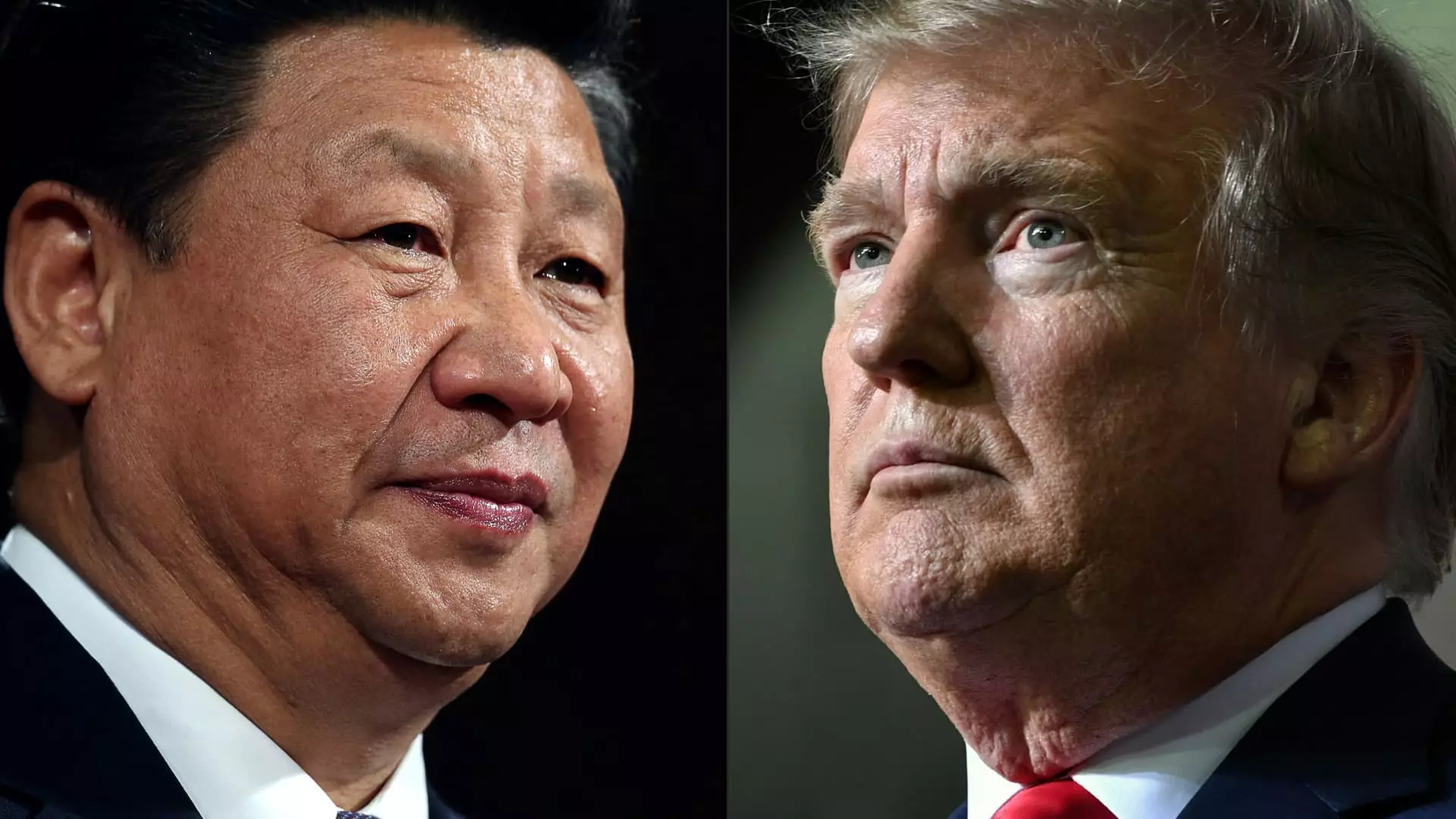As the U.S. and China remain locked in an increasingly fraught economic showdown, the semiconductor industry has become a pivotal battleground. The recent exchange of accusations between the two nations is not merely about chips but encapsulates the broader struggle for technological supremacy. China’s official representation, notably spokesperson Liu Pengyu, has vocally criticized what it characterizes as “discriminatory restrictions” imposed by the U.S. on semiconductor exports. This rhetoric is indicative of a simmering tension that has escalated into a full-blown trade war, particularly in the realms of artificial intelligence and cutting-edge technology development.
The U.S. administration, particularly under President Trump, has historically viewed China’s technological advancement with skepticism, leading to legal and economic maneuvers aimed at curbing China’s growth in sectors deemed strategically vital. The U.S. Trade Representative’s remarks about China “slow rolling its compliance” signal a firm stance that seeks to hold China accountable while simultaneously protecting U.S. interests. This back-and-forth dynamic suggests a pattern of protracted negotiations, often marred by a lack of trust and a perceived zero-sum worldview.
The Impact of Export Controls on the Tech Battlefield
The U.S.’s export control policies, particularly those against tech giants like Huawei, are designed to halt what is perceived as an aggressive technological expansion by China. This culminated in significant bans on American businesses from trading with Chinese entities that are deemed as threats to national security. The implications of these restrictions are profound: they compel Chinese firms to invest heavily in self-reliance and indigenous technology. This, in turn, could trigger an accelerated innovation cycle within China’s own tech industry, bridging gaps that the U.S. sought to exploit.
Of particular note is the U.S. restriction on advanced AI chips from companies like Nvidia and AMD. These limitations were not enacted in a vacuum but reflect a strategic shift towards a more defensive posture in the semiconductor sector. Nvidia’s statements reveal the philosophical rift between U.S. policymakers and tech leaders who recognize the inevitable rise of China’s semiconductor capabilities regardless of export restrictions. Jensen Huang, CEO of Nvidia, voiced an increasingly pertinent viewpoint: the assumption that China cannot manufacture competitive AI chips is dangerously naive. As these strategies unfold, the geopolitical ramifications are bound to ripple across the global tech landscape.
The Fallout of Diplomatic Discourse
The diplomatic communication around these issues often feels like a superficial exchange of statements, lacking any real depth or resolution. China’s calls for the U.S. to “correct its erroneous actions” highlight an urgent plea for dialogue that often gets overshadowed by hostile measures and retaliatory accusations. Moreover, the recent suspension of tariff agreements reflects a precarious trust that could easily crumble under the weight of unmet expectations.
The trade negotiations are complicated by the inherent differences in how each nation defines “fair play.” The U.S. approach seems rooted in a defensive posture, maintaining the belief that limiting China’s access to crucial technologies will ensure its dominance. Conversely, China’s insistence on fairness and adherence to negotiated terms suggests a desire for equitable trade practices—not merely concessions at the expense of its growth trajectory.
Looking Ahead: The Path of Technological Autonomy
As the U.S. and China navigate this complex relationship, one key takeaway emerges: the pursuit of technological autonomy is becoming increasingly critical for both nations. The prospect of a bifurcated tech landscape, especially in key industries like semiconductor manufacturing, looms large. For China, the pressure to innovate internally will likely yield significant advances, potentially reinventing global industry standards.
The Biden administration’s recent maneuvers, including the rescinding of some Trump-era restrictions, suggest an ongoing recalibration of strategy. However, the introduction of a new simplified export control rule signals that this dispute will remain a key focus of U.S. foreign policy. As each side grapples with its perspective and interests, the world watches closely, understanding that developments in this semiconductor saga will ultimately shape the global economy and dictate future technological landscapes.
The stakes have never been higher, and as the U.S. and China stake their claims in this technology arms race, we must question the long-term viability of a strategy that casts one nation as the adversary in a world that increasingly demands collaboration.


Leave a Reply